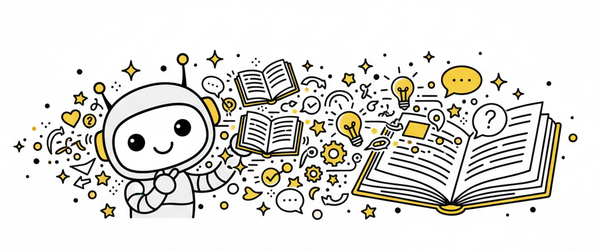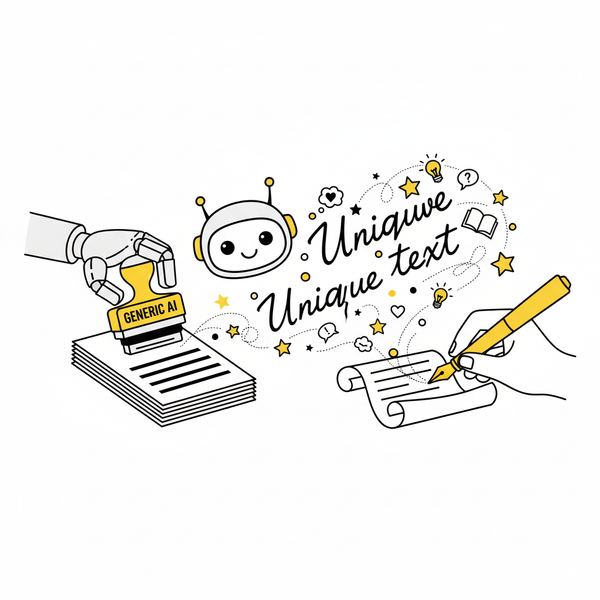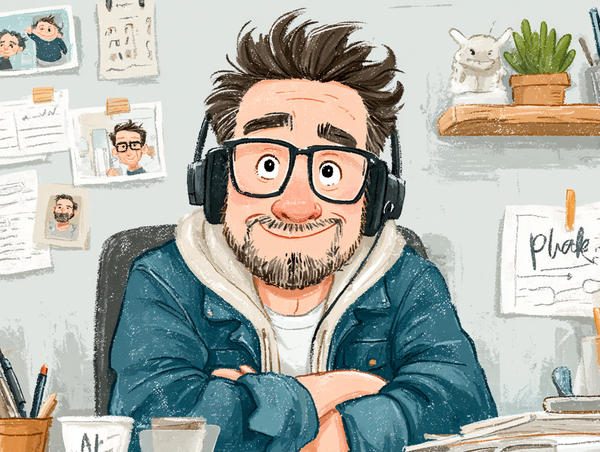A Creative Writer's Guide to Talking to AI
Master the art of the prompt! Go beyond simple commands to get nuanced characters, evocative settings, & complex plots from AI. Learn techniques for effective communication with your creative partner.

Artificial intelligence has opened up incredible new avenues for creative expression. AI writing tools can help brainstorm ideas, generate plot points, and even draft scenes or dialogue. But if you've experimented with AI, you know that the quality of the output can vary wildly. Sometimes it's brilliant, other times it's... well, generic.
The difference often lies in the conversation you're having with the AI. Think of the AI not just as a tool, but as a unique creative partner. And like any partnership, effective communication is key. This isn't about coding or complex programming; it's about mastering prompt engineering – the craft of giving clear, specific, and imaginative instructions to elicit the best possible creative response.
This guide will help you move beyond simple commands and explore techniques to make your AI conversations truly fruitful.
Beyond the Basics: Why "Write a Scene" Isn't Enough
Giving an AI a basic command like "Write a scene where two characters meet" is like telling an actor "Act a scene." They have no direction, no motivation, no context. You'll get something, but it will likely be bland and generic.
Creative writing is about nuance, voice, atmosphere, and subtle detail. To get an AI to generate content that approaches these qualities, your prompts need to reflect them. You need to provide the AI with the ingredients and the recipe, not just ask for the finished dish.
Key Techniques for Eliciting Creative Outputs
Let's look at how you can craft prompts to get more specific and evocative results for different creative elements:
1. Crafting Characters: More Than Just a Name
Instead of just saying "Write about a character," describe their essence. Give them motivation, a history, a way of speaking.
- Less Effective:
Describe a mysterious wizard. - More Effective:
Describe Gandilfina, an elderly wizard with a past shrouded in secrecy. She speaks in quiet riddles, carries the scent of dried herbs and ozone, and her gnarled hands often tremble, hinting at a forgotten trauma related to lightning. - Technique: Focus on sensory details, mannerisms, contradictions, and hints of backstory or personality traits. Tell the AI how they speak, not just what they might say.
2. Evoking Settings: Painting a Picture with Words
A setting isn't just a backdrop; it's a character in itself, influencing mood and action. Provide sensory details and atmosphere.
- Less Effective:
Describe a dark forest. - More Effective:
Describe the Whispering Woods at twilight. The air is thick with the scent of damp earth and decaying leaves. Ancient, gnarled trees twist like skeletal fingers against the bruised purple sky, and the only sounds are the rustle of unseen things in the undergrowth and a faint, mournful sighing in the wind that seems to carry forgotten secrets. - Technique: Use strong adjectives and verbs, focus on multiple senses (sight, sound, smell, touch, even taste), and imbue the setting with a specific mood or history.
3. Defining Tone and Mood: Setting the Emotional Register
You can guide the AI towards a specific emotional feel for a scene or narrative passage.
- Less Effective:
Write a sad scene. - More Effective:
Write a scene set in a quiet, rainy cafe. The tone should be melancholic and introspective, focusing on a character's quiet resignation as they watch the rain fall, contemplating lost opportunities. Use muted colors and gentle, repetitive sounds in the description. - Technique: Explicitly state the desired tone (e.g., wry, hopeful, tense, resigned, cynical) and suggest how sensory details or internal monologue can reinforce that mood.
4. Shaping Plot and Scenes: Directing the Action
Guide the AI on what needs to happen, the conflict, and the desired outcome or turning point of a scene.
- Less Effective:
Write a fight scene. - More Effective:
Write a tense, short fight scene (approx. 300 words) where Elias, a weary bounty hunter (describe his exhaustion through his movements), confronts Captain Eva Rostova, a precise and dangerous space pirate (show her calm, almost bored demeanor). The fight should take place in a narrow, sparking corridor and end with a sudden, unexpected betrayal. - Technique: Specify the characters involved, the setting, the type of conflict, the desired length, and a clear objective or outcome for the scene. Use descriptive adjectives for pacing and action.
General Principles for Effective Creative Prompting
Beyond specific elements, keep these overarching principles in mind:
- Be Specific (The Golden Rule): Vague prompts get vague results. The more detail you provide about what you do and don't want, the better.
- Provide Context: Give the AI the necessary background – who is involved? Where are they? What just happened? (Platforms like AI Story Hub, with dedicated character profiles and configuration files, excel at providing this underlying context automatically, making your direct prompts even more effective!).
- Define Constraints: Specify length, style to imitate or avoid, point of view, tense, or elements to include or exclude. (This is where features like
config.bannedwordsorconfig.aiin a structured tool are invaluable). - Experiment and Iterate: Prompt engineering is often a dialogue. If the first result isn't right, refine your prompt based on what the AI gave you. Ask it to rewrite a section with a different tone or focus on a specific detail.
- Use Examples (Implicitly or Explicitly): Describe the style or mood you want using evocative language in your prompt itself. Sometimes, providing a small example snippet of the desired output style in your prompt can also help.
The Art is in the Partnership
Mastering the art of the prompt is about learning to effectively communicate your creative vision to your AI partner. It requires clarity, specificity, and a willingness to experiment. It turns the AI from a random text generator into a powerful tool for exploring ideas and bringing your unique narrative universe to life.
Start practicing these techniques today. Pay attention to what makes an AI response feel generic and what inspires it.
Ready to try crafting more effective prompts in a structured environment designed to support your creative process? https://aistoryhub.coand what inspires it




